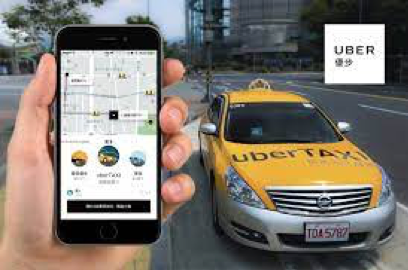In a bid to curb unemployment, many people have indulged in the taxi business as it is a good source of income for many families. The South African taxi market can broadly be divided into two groups: eHailing taxis for adhoc on demand transport, and minibus taxis for daily commuting.
eHailing taxis
When it comes to taxi apps in South Africa there are a variety, all serving different types of needs.

SA Uber employs many drivers, but Bolt SA is giving Uber a run for their money. Yookoo Ride profiles both the drivers and riders are profiled using facial recognition. inDriver South Africa enables bargaining for the best prices. With Orange Cabs you book your trip through the app or online to be sure to get to your destination on time. Zebra Cabscome with a variety of services. Taxi Live Africaenables effective communication between the driver, client and the support team through live chat support. Scoop a Cabworks by matches a client to a suitable driver in their location. Many of these taxi apps have security features, booking systems and different payment methods.

- 16,000,000 commuters daily
- 200,000 minibus taxis
- 300,000 drivers
- 100,000 taxi marshals
- 100,000 car washers
- 150,000 vendors at taxi ranks
Improving their commuting efficiency would create a significant amount of economic value such as making this navigation simpler and smoother for both commuters and drivers.
Minibus taxi app market
By contrast, limited support is available for the almost 16 million South Africans who have experiences with minibus taxis every day. Exceptions include recently launched MiTaxi and AftaRobot.
The South African minibus taxi industry transports 70% of the commuting public, touching many businesses and households daily, and comprises:
The Helen Suzman Foundation (2018) estimated that the industry’s annual revenue amounts to approximately R50 billion.
Imagine minibus taxi apps that allow commuters to travel safely, on time, with no queue, and commuters being able to pre-order a taxi for collection at a designated location. Minibus taxi apps are able to address some of the major challenges facing South Africa’s minibus taxi industry.
Minibus taxi industry challenges
- Taxi drivers are made aware of their customers only through their physical presence at locations.
- Commuters are unable to plan their journeys safely, due to:
- unreliable taxi schedules,
- unpredictable pick up locations,
- underrepresented route planning, and
- uncertainty regarding availability of each minibus taxi
- As a result, commuters have been forced to reorganize their life around public transport.
- Commuters are not able to communicate with the taxi industry directly to provide feedback on things like drivers’ safe driving habits, punctuality and availability of a ride to their specific locations.
- Commuters have to get up very early and possibly compromise their safety by waiting for a taxi to pass by due to unreliable taxi schedules.

From a taxi owner’s perspective:
- There is a lack of operational visibility and control of their vehicles’ whereabouts once they leave the property or taxi rank.
- There are a number of inefficiencies all leading to duplicated efforts in driving routes, ultimately resulting in a loss of potential income.
- As a load and route-based service, commuter behaviour will now become clear, resulting in better planning and control and more efficient operations.
The daily commuter:
- Will be able buffer planned activities instead of time.
- Be able to use the app to book the taxi in advance.
- Be connecting users to the taxi route network.
- Have the latest information on taxi fares by being notifying on price changes.
- Have advance notice of planned industry strikes and be able to plan alternative transport.
- Can be introduced to taxi marshals and queue marshals to rank managers for each taxi rank.
- Can be encouraged to report good and bad driving.
- Be introduced to route signs making hailing a taxi much more effective.
- Will find their points of departure much easier.
- Can estimate their arrival through the GPS system.
- Can plan ahead for their daily commute.
- Benefit from easing the peak hour frustrations by being able to inform employers ahead of time if there are any delays on the road.
- Cashless payment methods to enhance personal security.
- Bonus features could be the inclusion of location-based community news.
A key to the successful implementation of minibus taxi apps would be a plan to train and empower minibus taxi drivers, owners, queue marshals and minibus taxi association staff to use mobile devices to gather route activity and performance. This would take full advantage of such taxi apps by enabling commuters to receive route information, estimated time of vehicle arrival and trip time more efficiently than ever before.
Suburban mobility.
Urban mobility is crucial for the functioning of cities. There is much talk today about the development of Smart Cities. Multimodal approaches to transport, where commuters use different, complimentary forms of transport to reach their destinations, have become commonplace.
Adopting a technology platform like Minibus Taxi Apps, the minibus taxi industry will be able to tap into the efficiency gains that could be derived from access to modern technology, which are cashless fare systems, fleet management systems and passenger information systems.
However, it will also be made easier to become integrated in the other more formal modes of transport as a fully-fledged member of a multimodal approach to the challenges of urban mobility.
Click here to find out more about Vibe Marketing East Coast, or here to speak to one of the Vibe Marketing team.

